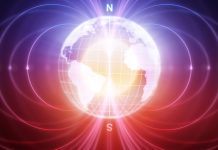Scientists have solved the evolutionary puzzle of how sloths went from enormous ground-dwelling giants to the small, famously-laidback tree-climbers of the modern day.
The study, by an international team of researchers led by academics at the University of York, challenges decades of scientific opinion concerning the evolutionary relationships of tree sloths and their extinct kin.
The two living types of sloth – two and three toed – seem remarkably similar, but the new research published in Nature Ecology and Evolutionestimates they last shared a common ancestor more than 30 million years ago.
The researchers unexpectedly discovered that the three-toed sloth is related to two giant ground sloths – the elephant-sized Megatherium and the pony-sized Megalonyx, which last roamed the earth around 10,000 years ago.
The researchers used cutting-edge techniques to extract ancient protein sequences from the fossilised bones of extinct sloths held in the collections of the American Museum of Natural History in order to map their relationship to living species of sloth.
Protein analysis allowed researchers to analyse fossilised sloth bones that were between 120,000 and 400,000 years old.
Lead author of the study, Samantha Presslee, a PhD student in the Department of Archaeology at the University of York, said: “Scientists have long been perplexed by the fact we used to have huge ground sloths and have ended up with modern, small, tree-dwelling ones.
“Previous analysis of the sloth family tree has been done by looking at the anatomy of extinct sloths from often-fragmented skeletons in the fossil record, but protein analysis gives us quite a different picture. Structural proteins in bone such as collagen encode information that can last up to around 3.8 million years.”







